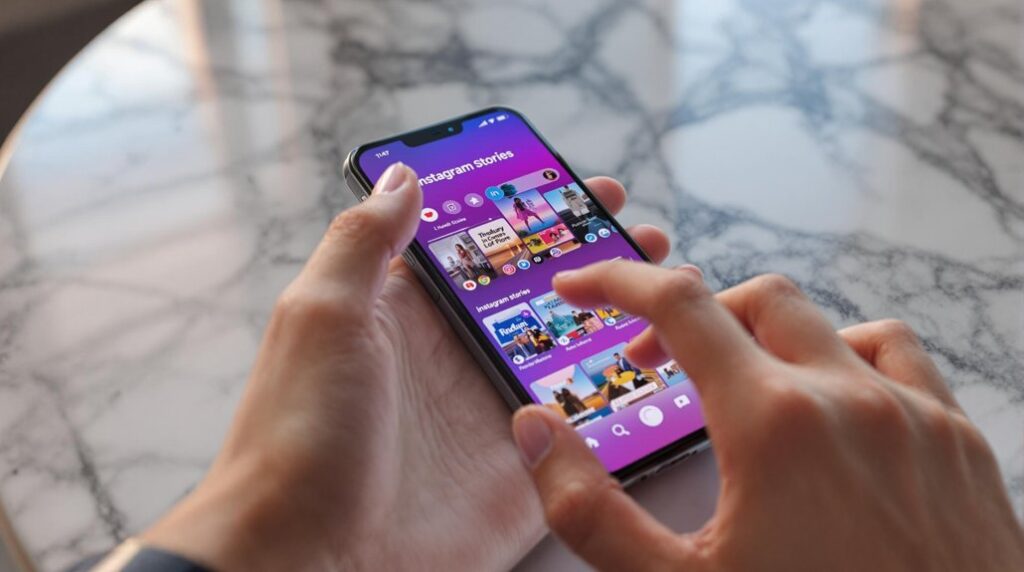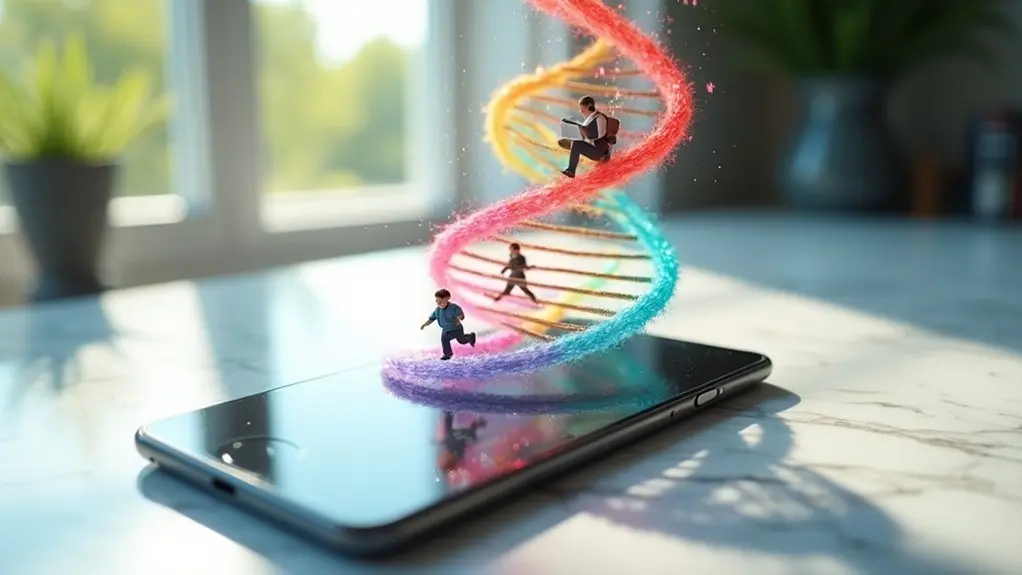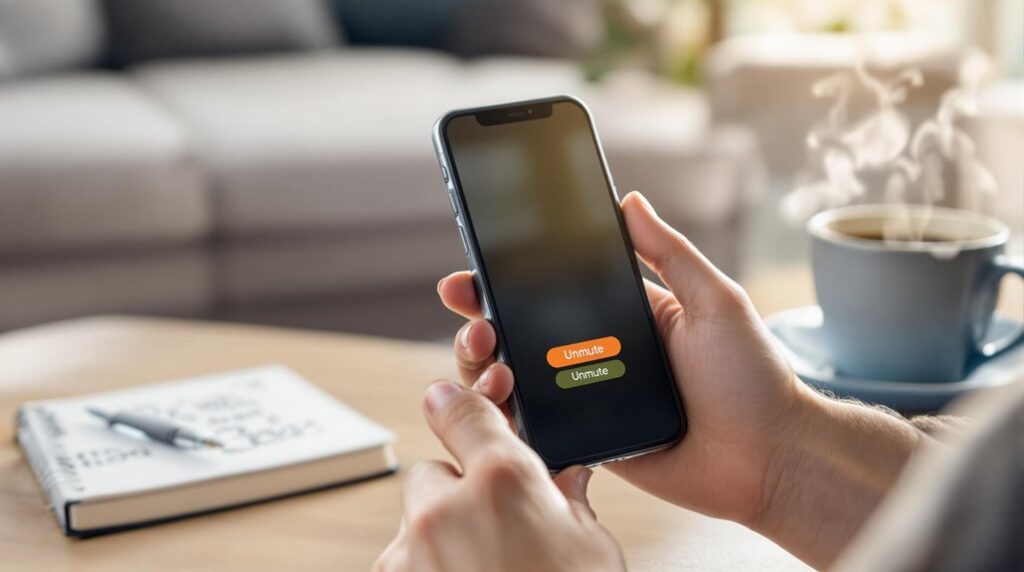Being blocked on Instagram restricts a user from viewing the blocker's profile, posts, and interacting with them, but the action remains undisclosed to the blocked party. Blocked individuals can still view their previous interactions with the blocker. Conversely, a deleted account is permanently erased from the platform, making all content, followers, and interactions inaccessible to anyone. Once an account is deleted, it cannot be recovered after a 30-day grace period. The complete absence in search results characterizes account deletion, presenting different social ramifications compared to blocking. For a deeper insight into these distinctions, further exploration is warranted.
Key Takeaways
- Blocked users cannot access the profile, view posts, or interact with the account, but deletion erases the account entirely.
- Blocking is reversible and temporary, whereas deletion is permanent, with no recovery after a 30-day grace period.
- Blocked users are not notified and remain visible to mutual friends; deleted accounts are inaccessible to everyone.
- "User not found" may indicate deletion or deactivation, not just blocking.
- Blocked users can still see past interactions, while deleted accounts lose all data permanently.
Blocking vs. Deleting Explained
Steering through the nuances between blocking and deleting on Instagram can be vital for effectively managing your digital interactions.
Blocking an account on Instagram is a temporary measure that prevents the blocked user from accessing your profile, viewing posts, and interacting with your activities. Remarkably, the blocked user is not notified of this action.
In contrast, deleting an Instagram account is a permanent decision, which completely removes all posts, followers, and direct messages. Once deleted, the account is deactivated and rendered inaccessible, not only to the user but to everyone else, with no recovery options available after a 30-day grace period.
Blocking is reversible, allowing users to reinstate previously blocked profiles and restore interactions when desired. However, a deleted account means total erasure and an inability to send or receive messages.
Users attempting to locate a deleted account may encounter a "User not found" message, indicating the account's permanent removal. Meanwhile, blocked users can still view their own content and any past interactions with the blocker, but they cannot interact further.
This distinction between blocking and deleting is vital for users aiming to control their online presence and relationships on Instagram.
Signs of Being Blocked
Understanding the signs of being blocked on Instagram is essential for distinguishing it from account deletion.
Key indicators include the inability to locate the user's profile in search results and the disappearance of their posts and stories, accompanied by missing interaction clues such as vanishing direct messages and profile pictures from past conversations.
Additionally, previously visible tags or comments made by the blocked user may no longer appear, and attempts to follow the user will result in an unresponsive follow button.
Profile Search Limitations
Searching for a user's profile on Instagram and encountering difficulty in locating it can raise suspicions about whether you have been blocked. When you attempt to search for their profile and are unable to see it, this could be a sign that someone has indeed blocked you.
In contrast, if the account is deactivated or deleted, you might receive a "User not found" message. To know if someone blocked you rather than deactivated or deleted their account, keep an eye out for specific indicators.
- Search from Another Account: Use an alternative Instagram account to search for their profile. If visible, you may have been blocked.
- Check Profile Visibility: A "No Posts Yet" message on public profiles or "This Account is Private" for private profiles could indicate a block.
- Look for Previous Interactions: If likes or comments from the user are suddenly missing, it may be due to a block.
- Search for Their Profile: If the result is "User not found," consider if the account is deactivated or deleted.
- Direct Messaging: Attempt sending a message. If the message fails to deliver, being blocked is possible.
These steps can help you check if someone blocked you on Instagram.
Missing Interaction Clues
When evaluating potential signs of being blocked on Instagram, missing interaction clues can serve as significant indicators. For instance, if previous likes and comments from a user are absent on your posts, it may suggest that they have blocked you on Instagram.
Similarly, if you notice the sudden disappearance of the user from your direct messages, where their profile picture is replaced with "Instagram User," it could indicate that they have either deleted their account or blocked you.
Additionally, being unable to tag the user in posts or see their comments on mutual friends' posts can be another sign of being blocked. Attempting to follow the user again without success, and without any notification, further suggests that you may have been blocked rather than the account being deleted.
Furthermore, when you search for the user's profile and receive a "User not found" message, it might imply either blocking or account deletion. In such cases, further verification is needed to confirm whether they have blocked you on Instagram or deleted their account.
These missing interaction clues are essential for determining the status of your connection with the user in question.
Confirm Blocking Status
To confirm if you have been blocked on Instagram, utilizing alternative account verification can provide clarity; if the user's profile is visible from another account but not yours, it is a strong indication of being blocked.
Additionally, examining mutual friends' lists can offer insights; if the user appears in these lists but remains unsearchable from your account, the likelihood of being blocked increases.
These methods are effective in distinguishing between being blocked and the user having deleted their account altogether.
Alternative Account Verification
An effective method for confirming your blocking status on Instagram involves using an alternative account. This approach allows you to know whether a user has blocked you or if they have deleted or deactivated their Instagram profile.
To check, see the profile by searching for the person's username using a second Instagram account. If you find the account through this method, it's likely you have been blocked on your primary account. This technique provides clarity without involving mutual friends.
Here are additional steps to evaluate:
- Search from a web browser: Use the URL format (instagram.com/username) to find the account. An error message may indicate a block.
- Check direct messaging: Attempt to send a message from your main account. Failure to deliver can confirm you've been blocked.
- Observe mutual friends: While not directly using an alternative account, their interaction can be insightful.
- Temporarily deactivate your Instagram: This can reset some visibility features, offering a fresh perspective when reactivated.
- Profile appearance in searches: If it appears on a secondary account but not the main, it's a strong blocking indication.
Mutual Friends Insights
How can you leverage mutual friends to ascertain your blocking status on Instagram? When trying to determine if you have been blocked on Instagram, mutual friends can be an invaluable resource. If you suspect you've been blocked, checking the lists of mutual friends can provide significant insights. Even if you're blocked on Instagram, the blocked user's profile will still appear in these lists, whereas a deleted account will vanish entirely. By asking mutual friends to check whether they can see the account, you can clarify the situation: if they can see the profile and you cannot, it's likely you've been blocked.
Additionally, mutual friends' interactions with the account in question can be telling. If they can like or comment on the account's posts, this suggests the account is still active, indicating a block rather than a deactivation or deletion. Conversely, if mutual friends report they cannot find the account, it suggests the account has either been deleted or deactivated.
| Observation | Mutual Friends Insight | Conclusion |
|---|---|---|
| Profile Visible | Mutual friends can see the profile | Likely blocked |
| Profile Invisible | Mutual friends cannot find the account | Possibly deleted/deactivated |
| Account Interaction | Mutual friends engage with the account | Account active, likely blocked |
| Error Message | See an error message when searching | Account might be deleted |
These strategies offer a reliable way to check if someone has blocked you without seeing an error message directly.
Signs of Account Deletion
When an Instagram account is deleted, several clear indicators can confirm its absence from the platform. On social media platforms like Instagram, if you attempt to visit a profile that has been removed, you will encounter the "User not found" message, signifying that the account might be deleted or deactivated.
Additionally, if the username is available for registration again, it is a strong indication that the profile doesn't appear because it has been permanently removed from the platform. This means that even mutual friends will be unable to find their profile, underscoring the account's deletion.
Moreover, the account will not appear in any search results, whether the account is private or public, making it impossible to locate the profile. Attempting to access the account via a direct link will lead you to an error message stating that the page isn't available, further confirming the account's deletion.
Here are some signs of account deletion:
- "User not found" message when visiting the profile.
- Username available for new registration.
- Absence from search results.
- Error message indicating the page isn't available.
- Mutual friends unable to locate the profile.
These indicators collectively confirm the removal of an Instagram account.
Distinguishing Deactivation
Deactivation on Instagram serves as a temporary measure for users wishing to take a break from the platform without permanently losing their data. When an Instagram user deactivates their account, it means that the account is temporarily hidden, rendering the profile and its content invisible to the public.
Unlike when someone blocks another user, deactivation affects the visibility of the entire account rather than just interactions between specific users. During this period, other users are not able to see any personal information or content from the deactivated account, preserving privacy without erasing data.
Despite the invisibility of content during deactivation, it is important to note that the account can still be found through direct links. However, the message thread with a deactivated account will remain visible, but no new messages can be exchanged until reactivation.
This contrasts with blocking, where the blocked party cannot find or interact with the blocker's account. Deactivation guarantees that posts, followers, and interactions are preserved, allowing a seamless restoration process by simply logging back in.
This feature is beneficial for those seeking to manage their online presence without the permanence associated with account deletion.
Reactivating Instagram Accounts
Reactivating an Instagram account is a straightforward process that allows users to regain access to their previously hidden profiles. When a user opts to deactivate their account, it enters a temporary state, preserving all data, including posts, interactions, and followers.
To reactivate, users simply need to log back into the Instagram app using their original username and password. This action restores the account fully, making all content visible once more. Importantly, deactivation does not equate to deletion, which permanently removes data after a 30-day grace period.
Here are key points to understand about reactivating Instagram accounts:
- Temporary Deactivation: You can deactivate your account once a week, offering flexibility without the risk of losing your data.
- Restoration: Upon reactivation, post count and all other metrics remain intact, ensuring continuity.
- Visibility: Reactivating makes your profile visible again, resolving the "user not found" message that appears during deactivation.
- Blocked Users: If someone has blocked you, reactivation won't change this status, but it does restore your own account's visibility.
- Learning the Process: Understanding how to navigate between deleted or deactivate states is essential for effective account management.
Permanent Deletion Effects
The ramifications of permanent account deletion on Instagram are significant and irreversible, fundamentally altering a user's online presence. Once an account is deleted, all posts, followers, comments, and direct messages are irretrievably lost. Users are advised to download their data before proceeding, as Instagram will hide this information permanently after deletion. Unlike temporary deactivation, which allows users to recover their content, permanent deletion erases all data after 90 days, making recovery impossible. During the initial 30-day grace period, users can log back in to cancel the delete or deactivate request.
| Action | Result | Recovery Possibility |
|---|---|---|
| Delete Account | All data and followers lost | Impossible after 90 days |
| Deactivate Account | Temporarily hides data | Recoverable upon reactivation |
| Use another account | Necessary for continued Instagram presence | Immediate |
| Block Detection | Says User not found or account deactivated | N/A |
When trying to ascertain if someone has blocked you, the profile might say User not found, indicating the account has been deactivated or deleted. Users can no longer see the account, and third-party apps are ineffective in recovering data from a deleted account. Consequently, it's essential to reflect on the long-term effects before choosing permanent deletion over other options.
Frequently Asked Questions
How to Tell if Someone Blocked You or Deleted Their Instagram?
To determine if someone has blocked you or deleted their Instagram account, examine signs of blocking such as altered direct message capabilities, story visibility changes, and mutual friends visibility. Deleted account indicators include unavailable profile search results and follower list implications.
What Is the Difference Between Blocked and Deleted Instagram?
The difference between blocked and deleted Instagram accounts lies in privacy settings and user interaction. Blocking manages communication boundaries, preserving online relationships, while deletion enhances account safety. Both impact social media etiquette and mental health, utilizing platform features.
What Happens When You Block and Delete Someone on Instagram?
Blocking versus deleting on Instagram affects privacy settings and user experience considerably. Blocking alters profile visibility and causes communication changes, potentially impacting relationship dynamics and emotional well-being. Deleting influences social consequences, yet retains some visibility and past interactions.
Does Instagram User Mean Blocked or Deleted?
The term "Instagram User" can indicate either a blocked or deleted account, impacting Instagram privacy and user interaction. This creates communication barriers, affecting social media relationships, account visibility, and altering the digital footprint and user experience.
Conclusion
The distinctions between blocking and deleting an Instagram account are pivotal in understanding user interactions and account management. Blocking restricts visibility and communication, while deletion results in permanent account removal. Identifying these actions involves recognizing specific signs such as sudden invisibility or complete absence of a user's profile. Additionally, deactivation differs from deletion as it offers the possibility of reactivation. The implications of these actions affect both personal engagement and digital presence, necessitating informed decisions regarding account management.




